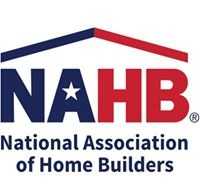WASHINGTON, D.C. – March 2, 2012 – (RealEstateRama) — The National Association of Home Builders (NAHB) today announced a new comprehensive framework for housing finance system reform that would transition Fannie Mae and Freddie Mac to a new mortgage securitization system for single-family and multifamily conventional mortgages.
“Our plan seeks to overhaul the housing finance system to ensure that housing credit is available and affordable in the future and is delivered through a competitive, efficient, sound, safe and stable system,” said NAHB Chairman Barry Rutenberg, a home builder from Gainesville, Fla.
To achieve this goal, Rutenberg said the system must include private, federal and state sources of housing capital; offer a reasonable menu of sound mortgage products for both single-family and multifamily housing that is governed by prudent underwriting standards and adequate oversight and regulation; and provide a federal backstop to ensure that 30-year, fixed-rate mortgages are available at reasonable interest rates and terms.
Replacing Fannie Mae and Freddie Mac with a new securitization system for conventional mortgages backed by private capital and a privately funded federal mortgage-backed securities fund must be done in an orderly fashion over time. During this phase-in period, Fannie Mae and Freddie Mac would remain operational until the alternative system is fully functioning.
Under this scenario, Fannie Mae and Freddie Mac would be gradually replaced by private housing finance entities (HFEs) that would be chartered to purchase single-family and multifamily mortgages from loan originators and package the loans into securities for sale to investors worldwide. The federal government would guarantee the securities, not the mortgages.
The HFEs would only purchase mortgages that are well understood and have reasonable risk characteristics, such as standard 30-year fixed-rate loans. The HFEs would operate under the oversight of a strong independent regulatory agency to ensure all aspects of safety and soundness. NAHB believes the 12 regional Federal Home Loan Banks could serve as HFEs.
Federal support to the conventional mortgage of the future would consist of a privately funded insurance fund where the government would guarantee its solvency in a manner similar to the Federal Deposit Insurance Corporation’s backing of the fund that insures savings deposits. Under this system, mortgage originators would pay premiums to capitalize the insurance fund, which would cover losses and ensure full payment to investors. The federal government would be required to pay investors only if the insurance fund was depleted.
“The intent is for the government to be in a secondary position and to be the insurer of last resort in order to reduce the risk to taxpayers,” said Rutenberg.
NAHB’s housing finance reform blueprint also proposes to:
• Restart a carefully regulated fully private mortgage-backed securities system. NAHB believes reforms are needed in the system for rating mortgage-backed securities and is supporting the development of new securities ratings agencies that would use criteria developed by securities investors to assure objective evaluations and avoid conflicts of interest.
• Continue the role of the federal government housing agencies. The housing finance support roles of the Department of Housing and Urban Development, Federal Housing Administration, the Department of Veterans Affairs, the Department of Agriculture and the Government National Mortgage Association (Ginnie Mae) would be preserved.
• Enhance the position of state and local housing finance agencies (HFAs) as a source of housing funds. The HFAs should have a more prominent housing finance role through the development of original programs for new homes and multifamily rental units involving partnering with federal and private providers of housing capital.
• Expand the role of the Federal Home Loan Banks (FHLBanks) in the housing finance system. The FHLBanks should continue their current activities to serve as an ongoing liquidity source for institutions providing housing credit. Existing programs, such as the FHLBanks’ mortgage purchase programs, should be enhanced by allowing the banks to move beyond portfolio purchases to securitization.
• Repair flaws that produced the housing boom and bust. It is extremely important to continue and complete steps to close the gaps in standards and oversight that allowed and facilitated the improper and illegal activities in financial and mortgage markets. This should be done by undertaking a series of comprehensive reforms to ensure sound mortgage products and prudent underwriting; requiring sound mortgage securities structures and full transparency for investors; and imposing adequate oversight on previously unregulated segments of the mortgage and financial markets.
View the full white paper at www.nahb.org/GSEwhitepaper.







